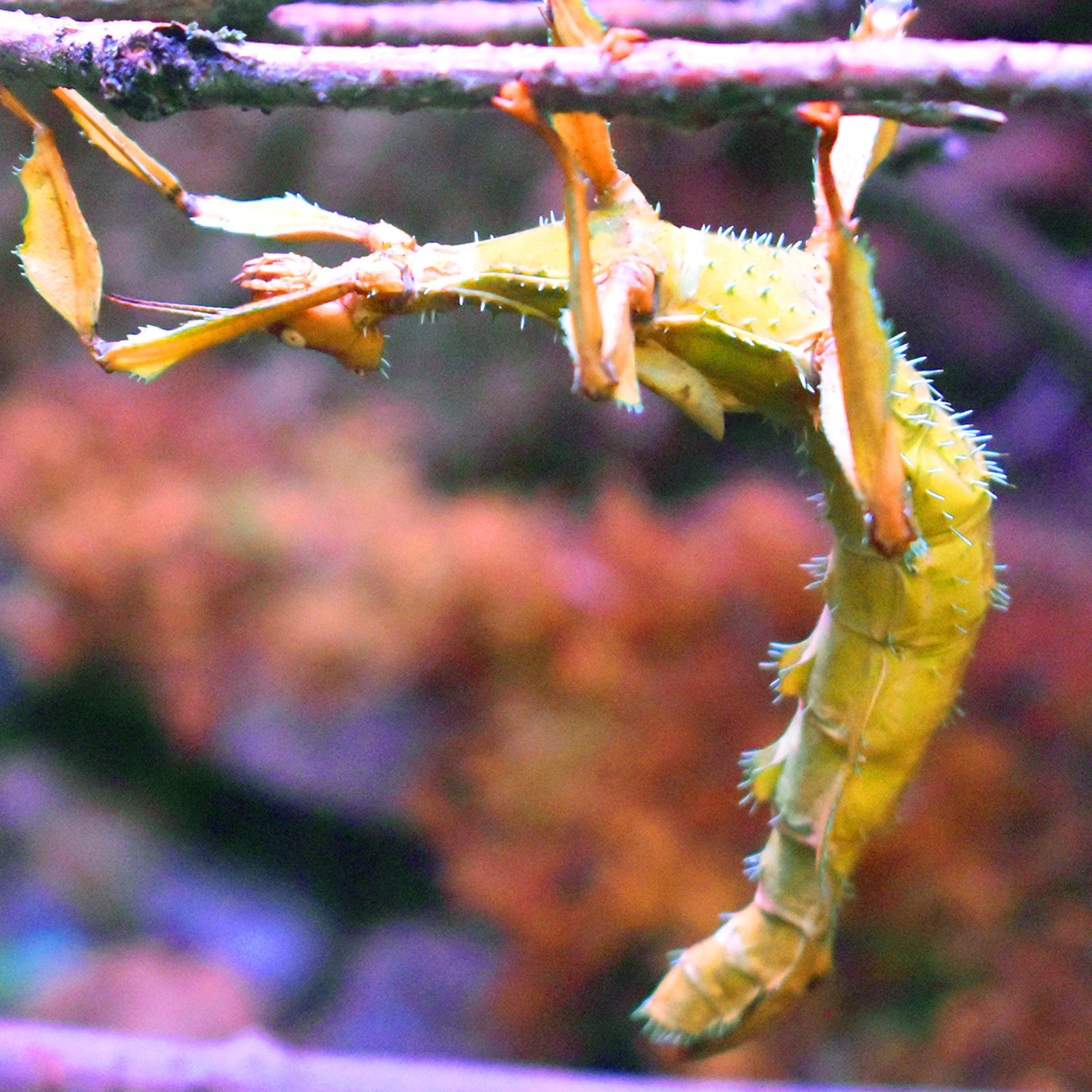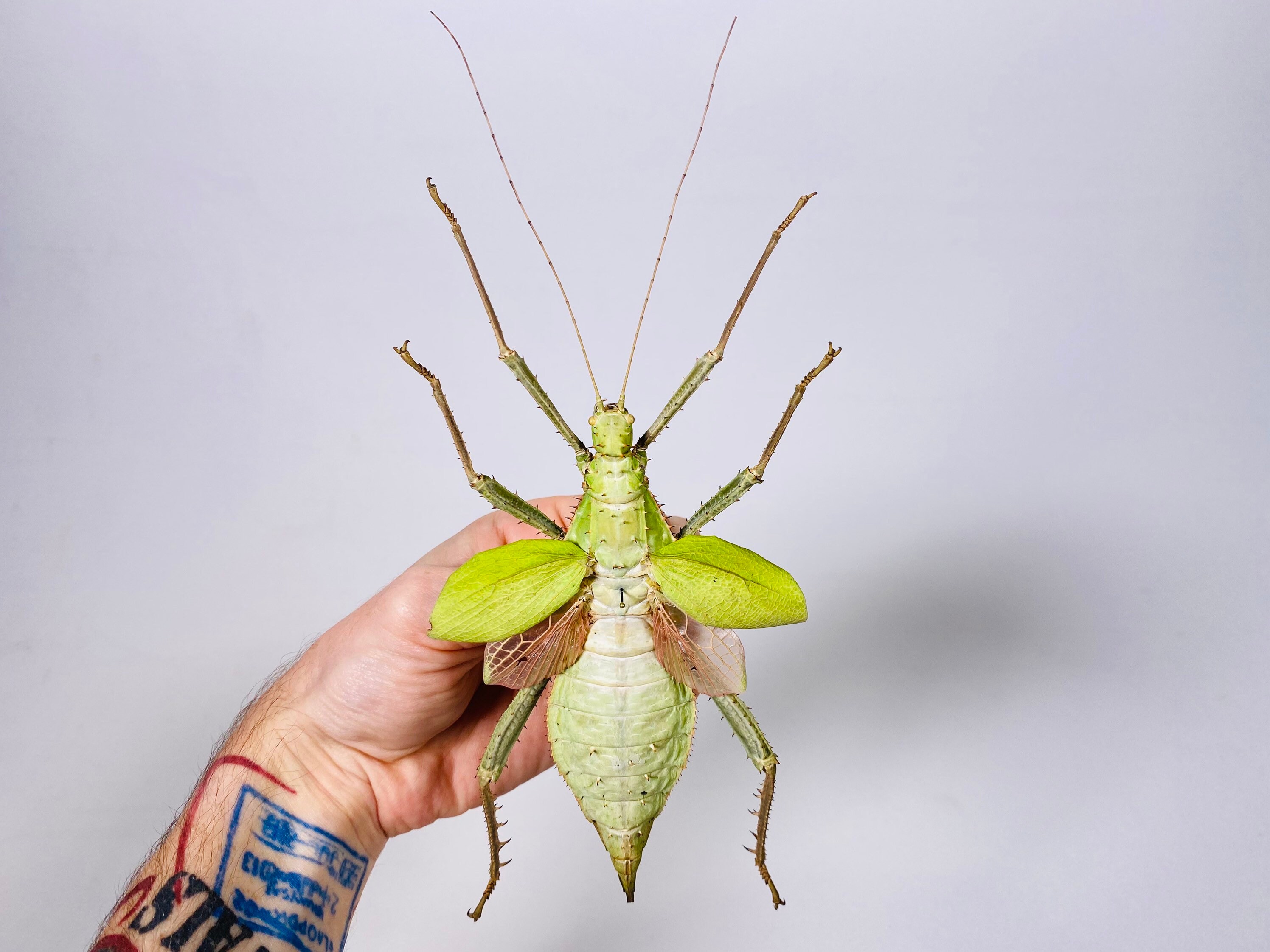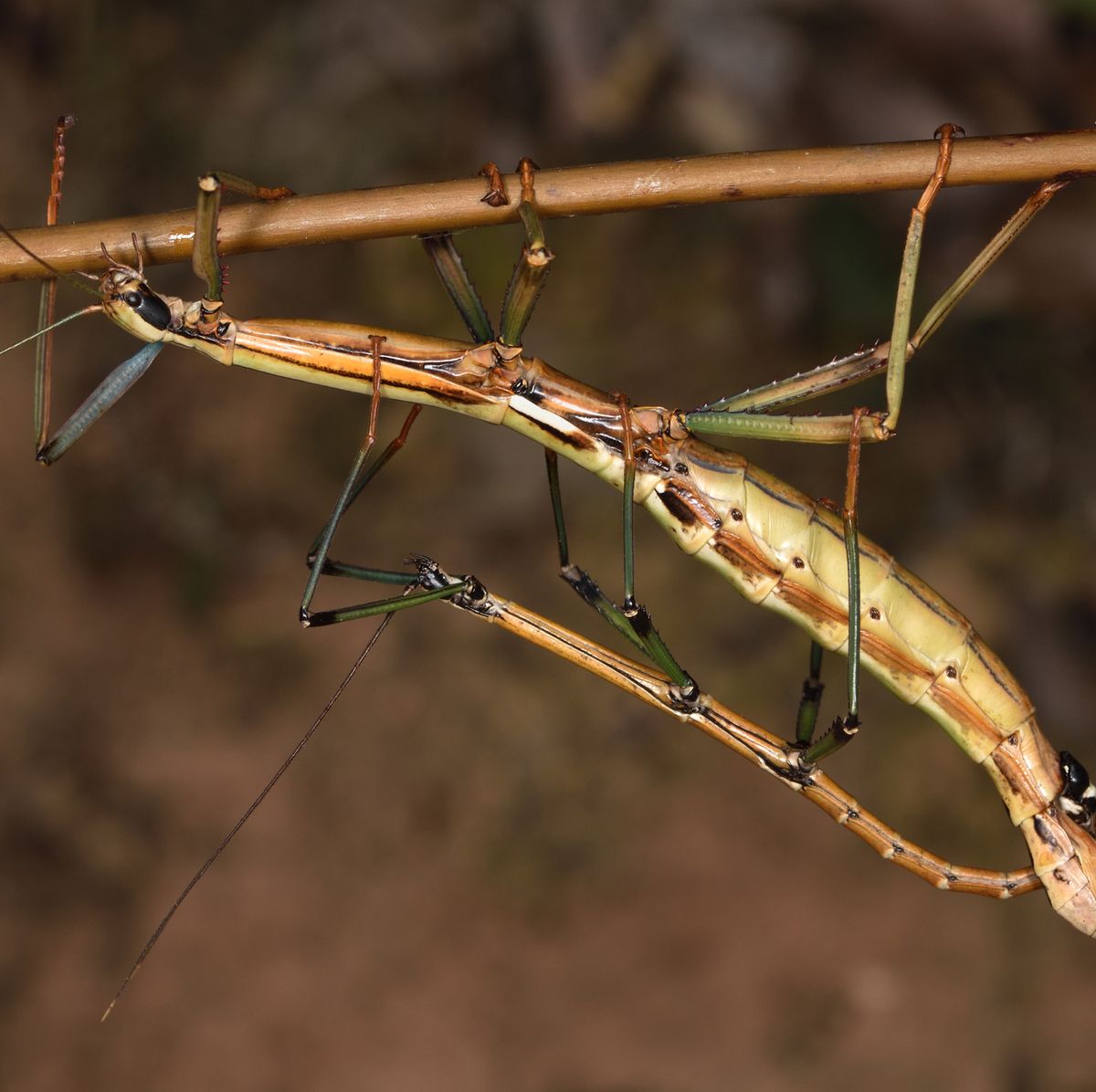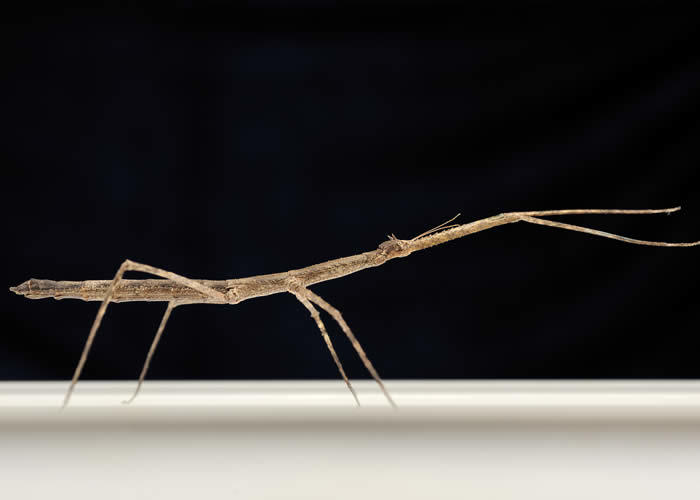Stick Insect
4.6 (486) · $ 15.00 · In stock

A tree stands in a forest under a cloudy sky. Suddenly it appears as if a twig is crawling down the trunk. The object isn’t actually a twig that’s sprung legs—it’s a stick insect. The stick-like trickster uses its appearance to protect itself from enemies so it doesn’t end up in, well, a sticky situation. FOOLED YA Stick insects—also known as walking sticks—live in tropical and temperate (or mild) forests all over the world. Related to grasshoppers, crickets, and mantises, these creepy-crawlies are usually brown, green, or black. They’re also the world’s longest insects. The largest one ever found stretched 22 inches with its legs extended. (Most are only up to 12 inches long.) This bug spends much of its time in trees, munching on leaves. When predators such as birds approach, the insect tries to remain completely still in order to blend with the branches. If a predator isn’t fooled and grabs the bug by the leg, it’s no big deal. The insect can detach the leg and scuttle away. It will later regenerate, or grow back, the lost limb. A GOOD EGG About 3,000 species of stick insects exist. Some are master mimics even before they hatch. The females from these species lay eggs that look like plant seeds. This prevents carnivorous insects from eating the eggs. This crawler really knows how to go undercover. Text by April Capochino Myers

Stick insects that are normally asexual may occasionally have sex

Giant Prickly Stick Insect
What is the definition of a giant stick insect? Are there any giant stick insects in Australia? If so, how many types are there and what do they look like? - Quora

Walkingstick, Camouflage, Defense, Mimicry

Leaf and Stick Insects: Order Phasmatodea - The Australian Museum

New Zealand Giant Stick Insect (Argosarchus horridus) · iNaturalist

Giant Stick Insect for Artwork Heteropteryx Dilatata

Why Stick Insects Might Be Into Birds Eating Their Kids

Stick Insects May Have Evolved to Be Eaten

Northern Walking Stick






